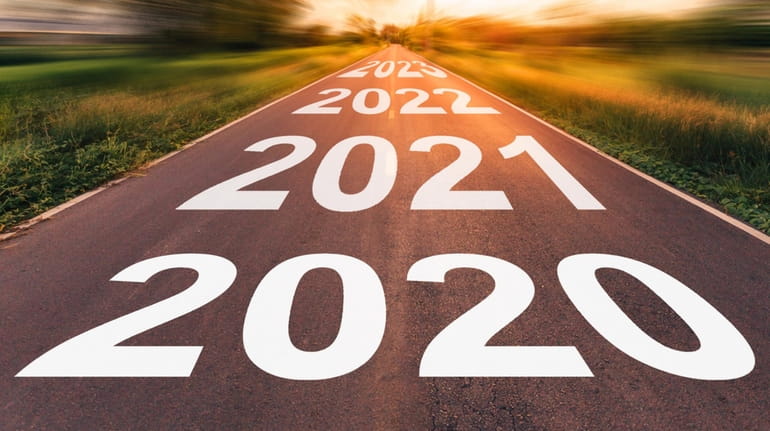Looking ahead to the next decade

What might the world be in 2030? Credit: Getty Images/iStockphoto/tortoon
As the decade turns, we are entering a perilous time.
Last week, the editorial board looked back at how we thought the world might look in 2020, from the vantage point of 2010. This week, we’re looking ahead again. What might the world be in 2030?
It seems clear that it will be a world carved by the challenges of division. The distance between the haves and the have-nots is dangerously widening, on Long Island and around the world:
Income inequality: We are living through a new Gilded Age that became even starker during the pandemic, as America’s essential workers reported to hospitals, grocery stores, precincts, classrooms and train depots or faced furloughs and layoffs. Others, such as those in the hospitality sector, saw their entire industry shut down.
While some Americans in top income brackets worked from home and had health care and savings, others across income levels emptied their bank accounts and waited in line for donated food, dreading hospital bills.
Such disparities have been expanding. The ranks of Long Islanders making under $35,000 a year have grown by 1.04% since 2005, while those making $100,000 or more jumped by 3.31%, and those in the middle shrunk by 4.35%, according to a nextLI analysis of American Community Survey data from 2005 to 2018 that takes inflation into account. The end result is more struggles for those already struggling, with a troubling impact on how we are educated, housed, cared for, and fed.
Racial inequality: America’s original sin remains at the nation’s core. George Floyd’s death at the hands of Minneapolis police underscored once again the challenges even of daily life for Black Americans. Racism is a problem on Long Island, where being nonwhite can still lead to different treatment from police while driving, and from real estate agents while buying a home.
The arc of history bends toward justice, but slowly. Worse, small improvements toward fuller equality have in recent years been met with a reactionary force, by those with the mistaken fear that white America is somehow threatened by neighbors and citizens with a different skin color.
The uneven impact of climate change: We are seeing the terribly physical impacts of climate change, with rising temperatures and sea levels, and more intense storms. As the fallout of a warming planet becomes clearer, the disparities will be clearer, too — with poorer countries suffering the floods and heat brought on by developed nations’ use of carbon, and wealthy nations able to mitigate the impact within residents’ climate-controlled homes. Long Island is at particular risk with its long coastlines and underdeveloped infrastructure, from sewers to water sources. Most challenging of all in the next decade may be the difficulty of predicting how the climate crisis will unfold, launching migrations, skirmishes over resources, and health emergencies.
The shifting of the global balance of power: The world outside our borders is unstable, with international institutions from the UN to NATO to the European Union and the World Health Organization under threat. America, the world’s wealthy hegemon, has been retrenching from its role on the world stage, leaving poorer countries and allies to fend for themselves. Meanwhile, antagonists like Russia and China are flexing their muscles, eager to take advantage of unfocused American leadership. The forces of nationalism and populism brought on by global inequality are stirring, with implications for future conflicts in war and economic competition.
The digital divide: Amid the confused global picture, nation-states are not the only great powers. Technology companies from Google to Facebook to Amazon are world actors themselves, with the ability to destroy competition and outfox governments. So much of modern life is undergirded by the online world, and that’s sure to continue in unexpected ways. But unchallenged technological titans have the ability to bestow enormous favor and prosperity undemocratically. The very idea of democracy is being morphed by technology — the great promise of increased engagement and a universal public square is paired with the effect of unchecked social media that can rip apart communities and threaten civility from Long Island to Myanmar.
These are just some of the challenges that the next decade holds. If we know anything from looking back at old prognostications, it is that other challenges will certainly arise and perhaps even overtake the rest.
A possible future in 2030 could include a stronger Long Island, where housing costs and paychecks are balanced and the Island’s beaches and power sources and transportation systems are strengthened. That future includes a world that has taken strides to reduce inequality by improving the lives of workers, by attacking the climate crisis, by leveling discrimination, by engaging with global allies, and by harnessing technological innovation for its value to citizens, not just shareholders.
Or 2030 could arrive after years of spiraling inequality, stagnation, strife, and chaos, a world in which even the pandemic of 2020 looks like the beginning of something worse.
— The editorial board
